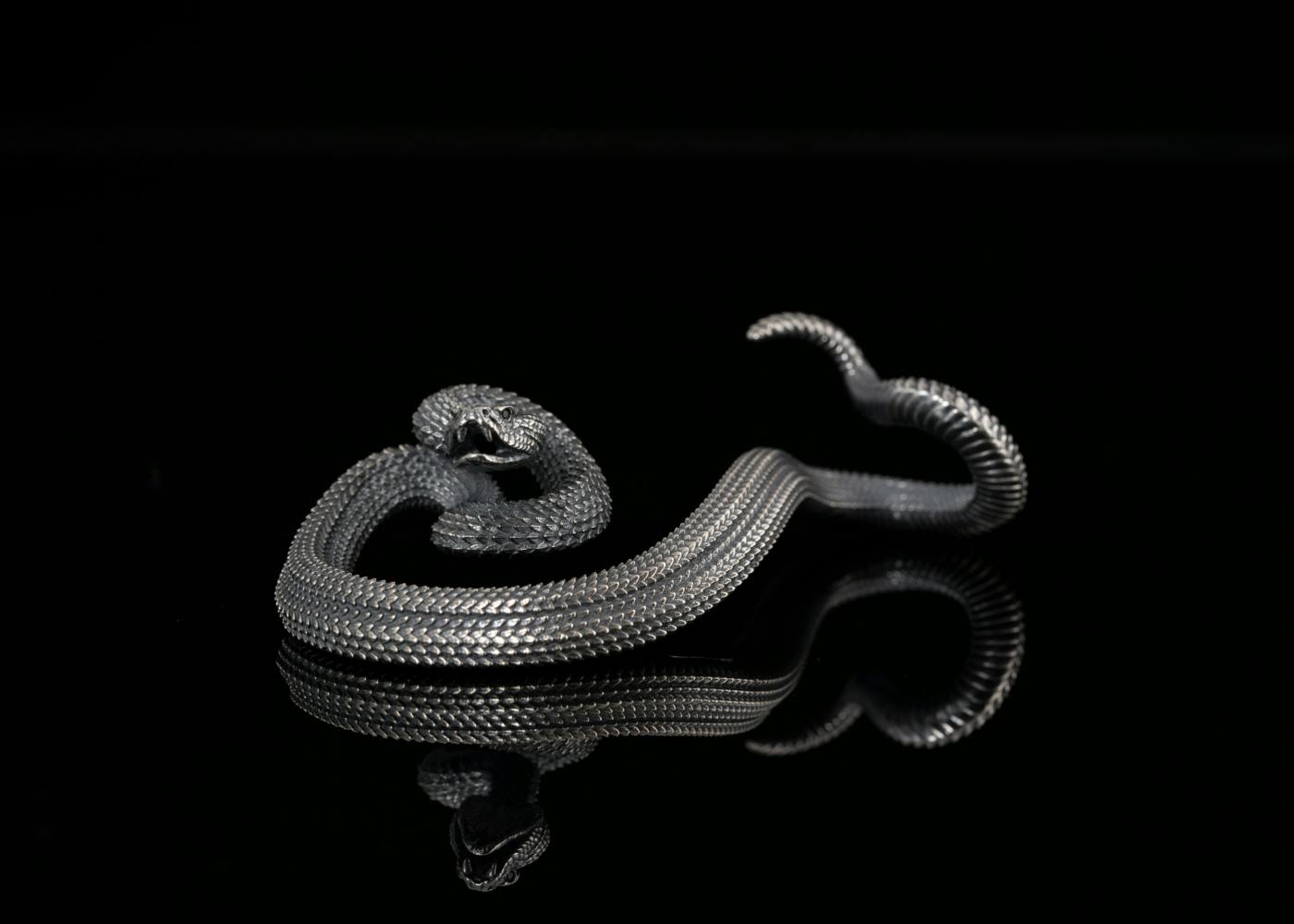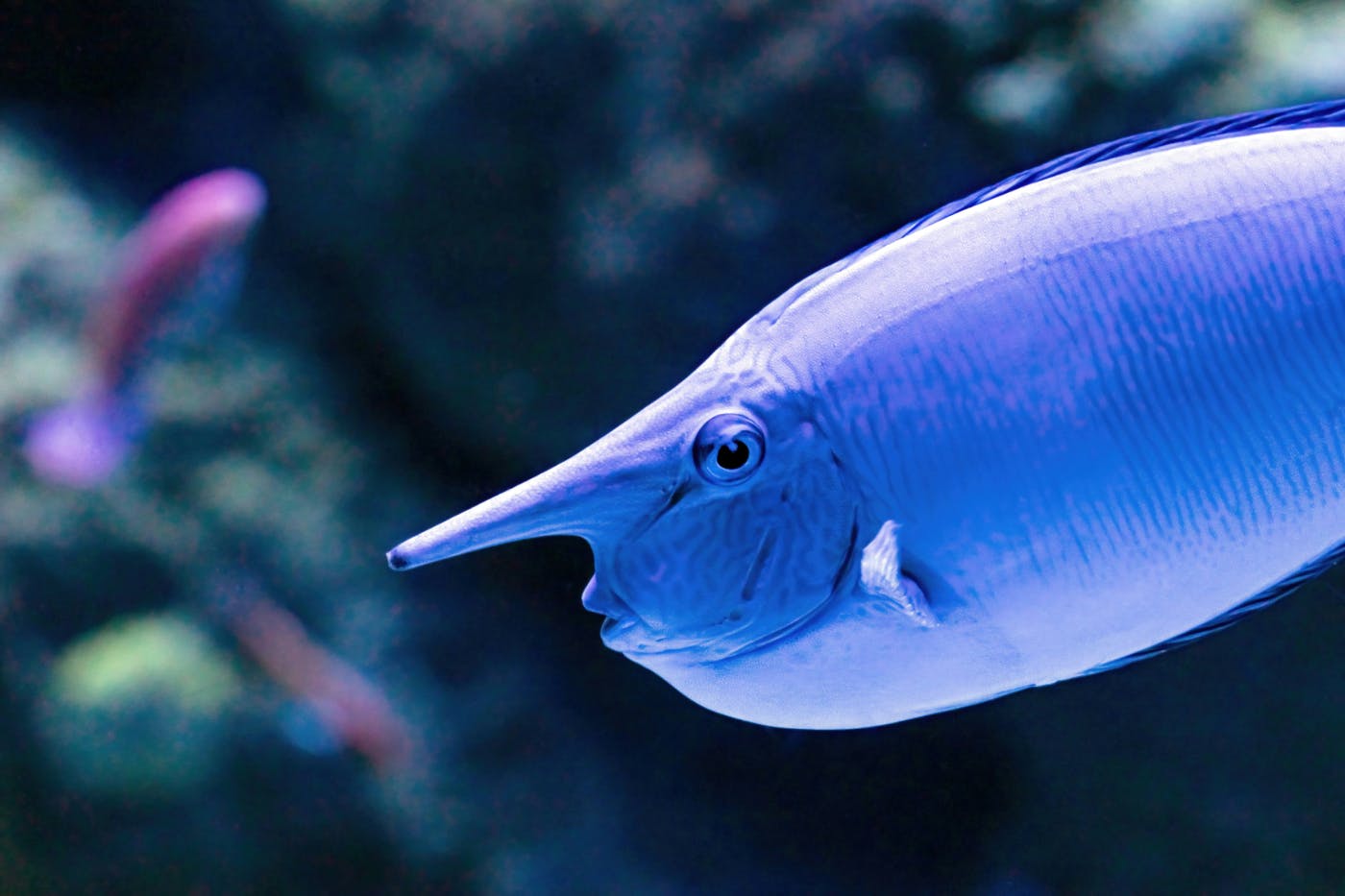
In a world where every brand is vying for your attention, it’s no surprise that strange, offbeat, and downright weird branding has started to rise above the noise.
Late night, single man, swilling scotch, trying to bring about sleep anyway possible. Watching TV is what passes for entertainment. Suddenly, on the screen appears a beautiful woman, just striking, in a black dress that skirts the line between opaque and Playboy centerfold. She stares directly into the camera, an unmoving face. Some ethereal music plays behind her, and the background moves, but she stays still. Then, a man with perfect abs, long hair, and a face that says I know I am super pretty, but you’re just jealous. He rises from the still pool of water that this woman is apparently walking on. He is now beside her. She doesn’t acknowledge him. He only has eyes for himself. A voice over, androgenous, says: “Life is the passion you create.” The man nuzzles the woman’s neck, she brings one long, graceful arm up and wraps it around his head, pulling him closer. She smiles. The screen goes black. I sit up, drop my scotch, and yell into the darkness, “What in the name of all that holy was that?” I have no idea. But, I tell everyone I know about when I wake up at noon the next day.
That sounds weird, is the general response. And they are right. That was weird. But not so weird, I was turned off. Nor so weird that I banished it from my mind. Maybe it was the scotch, or maybe it was jealousy that I don’t now, nor will I ever, look like that man, or have a woman like that wrap me up and pull me close. It doesn’t matter what caused me to sit up; it was weird, and it stayed with me. Like the time my Golden Retriever sat next to me on the couch and I said, “Hey, what are you watching?” We had a short conversation before I allowed myself to think, “Is it weird that my dog is talking to me?”
The dog answered yes.
The Rise of the Weird (Why Weird Works)
In a world where every brand is vying for your attention, it’s no surprise that strange, offbeat, and downright weird branding has started to rise above the noise. Let’s face it: with the barrage of ads, billboards, and social media posts hitting us every day, brands need more than just a catchy slogan or a nice logo—they need something that will make us stop, look, and say, “What the heck was that?”
Weird branding works because it’s memorable. In a sea of conformity, the brands that stand out are the ones that do something different. It’s the old adage: you can’t be afraid to be a little odd if you want to be unforgettable. And that’s exactly what weird brands do—they make you sit up, take notice, and think, “I need to tell someone about this.”
Take, for example, the iconic Dollar Shave Club launch video. It’s a brand that could’ve easily slipped into the background, right? A razor company. But no, they made an ad with a guy casually walking through a warehouse, throwing out quirky one-liners like, “Do you like spending $20 a month on brand-name razors? I do, too.” It was weird, it was funny, and it was honest. The video went viral, not because it was polished and perfect, but because it was real and refreshingly offbeat.
The weird factor here isn’t just the humor or the surprise—it’s that Dollar Shave Club went against the grain of what we typically expect from corporate marketing. They didn’t try to sell us some perfect image of manliness. Instead, they sold us something relatable—a guy who’s tired of overpriced razors and doesn’t mind making fun of the whole process.
Weird works because it cuts through the fluff and gets to the heart of what consumers really want—authenticity and personality. It’s not about looking polished or perfect—it’s about looking real, vulnerable, and maybe just a little bit eccentric.
So, the next time you see a brand doing something a little strange, remember: they’re probably doing it for a reason. And chances are, you’re going to remember it long after the ad fades from your screen.

Transparency and Authenticity – Not Just Buzzwords
In the age of information overload, consumers are no longer content with a brand simply saying the right things. They want transparency. They want authenticity. And—let’s be honest—they want it all without having to dive too deep into the fine print or watch a YouTube documentary on a brand’s supply chain.
Take Ben & Jerry’s as an example. When they tie their products to social causes, like advocating for climate change awareness or racial justice, they do more than just slap a catchy hashtag on a pint of ice cream. They back it up with consistent actions, whether it’s advocating for policy changes or addressing issues head-on with their messaging. It’s not just about getting “likes” on social media—it’s about putting their money where their mouth is.
But let's talk about the other side of the coin: the brands that wear a "sustainable" or "ethical" badge without having anything to back it up. You know the ones—putting out an eco-friendly product line just in time for Earth Day, only for the next campaign to roll out with a "Buy 1 Get 1 Free" plastic water bottle sale. It’s the marketing equivalent of showing up to a vegan potluck with a platter of fried chicken. We see you, and we know what you're doing.
Here’s the problem: consumers today are more educated, more connected, and more vocal. They don’t just take a brand’s word for it—they investigate. There’s no getting away with it anymore. If your actions don’t align with your messaging, people will notice. They’ll call you out on it. And once that trust is broken, it’s almost impossible to regain.
This doesn’t mean every brand has to be perfect. Far from it. Transparency doesn’t mean flawless—it means owning up to mistakes and learning from them. A brand that can admit, “Hey, we got this wrong, but here’s how we’re going to fix it,” is far more trustworthy than a brand that pretends nothing ever goes wrong. Authenticity, in essence, is about being human, not just perfect.
Branding Through the Ages: Weirdness Then vs. Now
Branding has undergone a massive transformation over the years. In the past, the goal was to project a polished, professional image, to be perfect—or at least to look that way. Think back to the 1950s, where classic ads showed men in suits, women in dresses, and everyone in perfectly composed, idealized scenarios. Brands wanted to inspire trust and dependability, which they achieved through imagery that represented order and perfection.
Fast forward to today, and the world of branding has shifted. The rise of digital media, social platforms, and the breakdown of traditional advertising has made weirdness not only acceptable but often desirable. Consumers no longer respond to perfection in the same way—they want authenticity, and they want brands to be more relatable, more human.
Take Nike, for example. While their old-school ads showcased athletes looking pristine, their recent campaigns have been more about celebrating imperfections and human struggle. The "Dream Crazier" campaign, which featured athletes pushing their limits despite societal expectations, is a far cry from the polished, perfect athletes of the past. Nike embraced a level of realness—and even weirdness—by portraying athletes in raw, emotional, sometimes messy situations. The result? A powerful connection with a wider, more diverse audience.
In today’s world, a "perfect" brand can actually come off as disconnected, inauthentic, and, well, kind of boring. People connect with brands that embrace the weird, that show vulnerability, and that don't try to be everything to everyone. Just look at the explosion of TikTok—brands that can connect with young audiences are the ones that are weird, fun, and ready to laugh at themselves. It’s about letting go of the "perfect" image and embracing the fun, quirky side of what makes a brand unique.

The Weirdest Branding Examples That Actually Work
When you think about it, there’s a reason brands are willing to take a risk and embrace the weird. Strange branding has the power to grab attention, spark conversation, and—if done right—can even go viral. And while some of these examples might make you scratch your head, they’re effective at one thing: standing out.
Here are a few examples of brands that have embraced the weird—and somehow made it work:
Taco Bell’s “The Taco Bell Chihuahua” We’re talking about a dog, not just any dog, but a chihuahua that became the face of the brand for years. In a sea of fast food mascots, Taco Bell's chihuahua took things to another level of weird. He was a character that didn’t make much sense, and yet people loved him. He was quirky, memorable, and, in his time, an iconic figure in the fast food world. And for Taco Bell, that oddball dog was the perfect way to break through the noise of competitors.
Skittles’ "Taste the Rainbow" Campaign Skittles has made a name for itself by fully embracing weirdness in its ads. From surreal commercials where people are constantly surprised by rainbow-colored explosions to moments that seem like they were pulled out of a fever dream, Skittles has made bizarre its brand identity. And guess what? It worked. Their odd, unpredictable, and whimsical approach gave them a clear identity, and we remember the brand because it made us laugh (and sometimes question reality).
Axe Body Spray’s Absurdly Over-the-Top Ads If there’s one brand that has consistently embraced over-the-top weirdness, it’s Axe. Their ads often feature fantastical, exaggerated situations where wearing their body spray leads to almost ridiculous results—like hordes of women chasing after you (yes, really). The absurdity has made Axe a memorable brand, and although the ads can border on cringe-worthy, there’s no denying their effectiveness in building an unforgettable image.
MeUndies’ Quirky Designs and Campaigns MeUndies took a product that is typically associated with boring, utilitarian designs—underwear—and made it playful, fun, and totally weird. From their bold prints to their cheeky (pun intended) marketing, they’ve built an identity that isn’t afraid to embrace the odd and playful. They’re not just selling you a pair of underwear; they’re selling you a mindset.
Mailchimp’s Quirky, Playful Branding Mailchimp’s mascot is a little monkey named Freddie, and its tone of voice is whimsical and fun. For an email marketing service, they’ve done everything to make their branding stand out as un-corporate and playful, making a topic that's typically dry (email marketing) feel accessible and, yes, a little weird. But that’s what makes them memorable—who would’ve thought that a serious, professional tool would embrace fun and a bit of weirdness so successfully?
The Secret Sauce – How Weird Brands Actually Build Loyalty
Okay, so we’ve established that weird branding grabs our attention—but how does it actually build loyalty? It’s one thing to get someone to notice your brand, but it’s another to get them to come back again and again, to feel like they’re part of something bigger, and to form that strong emotional connection that drives customer loyalty.
Here’s the thing: weirdness creates a sense of belonging. Think about it—when you buy into a weird brand, you're not just buying a product. You’re buying into an identity, a culture, a feeling that you’re part of an exclusive club. And let’s face it—everyone loves a good inside joke. Weird brands often tap into that feeling of being in on something others don’t quite understand, which strengthens the bond between the customer and the brand.
Take Squatty Potty, for example. It's a product most people wouldn’t want to talk about in public, but their bizarre, over-the-top marketing made people feel comfortable with something that’s, well, not-so-glamorous. The ad with the unicorn pooping rainbow ice cream? Weird, yes. Effective? Absolutely. It turned an embarrassing bathroom product into a viral sensation. People didn’t just buy Squatty Potty for the gimmick—they bought into the humor, the absurdity, and the feeling of being part of the “weird” movement. That’s loyalty.
Then there’s Cheetos. Let’s talk about how they’ve branded weird over the years. Cheetos has embraced the chaos of their snack—the dust, the mess, the oddity of the product itself. Instead of trying to make it "neat" or "polished," they’ve leaned into the messy, cheesy, fun side of things. From bizarre commercials to a playful, irreverent social media presence, they’ve built a brand that’s not just about the product—it’s about the experience. Weird? Totally. But people love the brand for that very reason.
And then there’s Dave’s Gourmet with their Dave’s Insanity Sauce. Talk about branding that packs a punch—and not just in heat. The product is infamous for being almost too hot, and their marketing leans into that extreme reputation. With a bold, in-your-face approach, they’ve turned the "insanity" of their sauce into part of their identity. Dave’s Gourmet isn’t just selling hot sauce; they’re selling an experience—a cult following of people who want to push their taste buds to the edge. It’s weird, it’s extreme, and it works. The brand has built a dedicated base of fans who don’t just love the product—they love the chaos of it.
Weirdness gives customers something to talk about. It becomes more than just a product or an ad—it becomes part of their story. They share it with their friends, they laugh about it, they post about it. This creates an organic connection that builds long-term loyalty. Customers are more likely to return to a brand that made them feel something—whether that’s laughter, confusion, or even a sense of wonder.
Weirdness gives brands an edge, but it also creates an emotional connection with customers that can’t be replicated with traditional, "safe" marketing. The next time you think your brand is too weird or quirky to work, remember: it’s probably that very weirdness that will make it stand out, and it’s that distinctiveness that will keep customers coming back for more.

Marketing Expert Insight
As marketing expert Seth Godin once said: “Marketing is no longer about the stuff that you make, but the stories you tell.” Today’s weird brands are tapping into that truth—they’re not just selling products, they’re selling experiences. And those experiences are often deeply tied to their uniqueness, their ability to be bold, and sometimes even bizarre. Weird brands don’t rely on traditional messaging to move products; they create stories that resonate emotionally, making their marketing both memorable and shareable.
Ann Handley, another marketing expert, puts it this way: "Consumers want brands to be real, and part of being real is showing up as you are—flaws, quirks, and all." Brands that embrace their weirdness are the ones that endear themselves to their audience. The key is consistency—when weirdness is part of your brand identity, it becomes something people expect, something they can rely on. And that, in turn, builds trust.
Summing Up
So, what’s the takeaway here? In a world overflowing with branding noise, weirdness has a special power. It’s not just about making people laugh or raising eyebrows—it’s about creating something memorable, something that sticks. When brands embrace their weirdness, they stand out, and when they stand out, they capture attention and, more importantly, they capture loyalty.
We’ve all been there—suddenly intrigued by a brand that’s done something out of the ordinary. Whether it’s Taco Bell’s talking chihuahua, Skittles’ surreal rainbow magic, or Dave’s Insanity Sauce pushing the limits of heat, weird brands know how to get noticed. And once they have your attention, they keep it, not by being perfect, but by being real. Weirdness allows brands to show a side of themselves that’s authentic, and it’s this authenticity that creates an emotional bond with their audience.
At the end of the day, the weird brands don’t just sell you products—they offer you an experience. They invite you into a world where the unexpected is the norm, and the weirder, the better.
So, what’s the weirdest brand you’ve encountered lately, and what made it stick with you?

